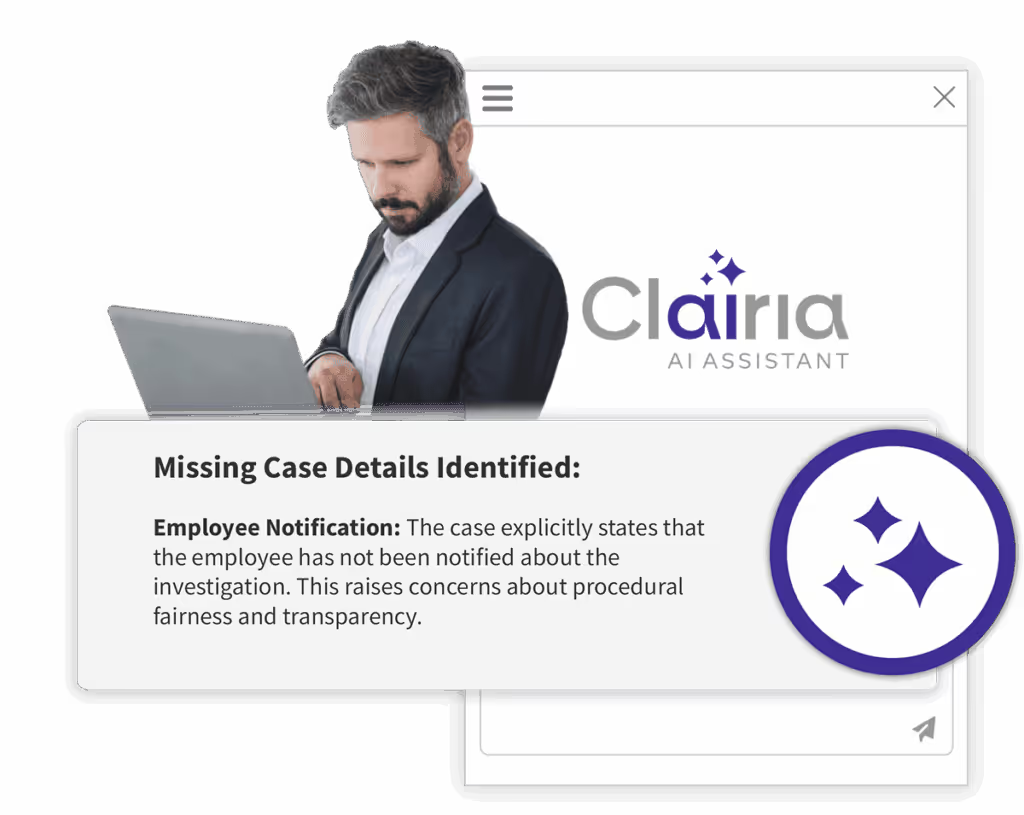Colleges and universities are bustling with activity. Classes and events fill campuses with students, staff, visiting athletes, prospective students, and members of the public. These activities make campus life vibrant, but they can also lead to a wide array of incidents at any time of day, any day of the week.If you’re feeling overwhelmed by the volume and variety of cases your institution needs to manage daily, consider switching to a dedicated case management system. In this guide, we’ll outline the types of incidents you could encounter, explain the investigation process, and demonstrate why higher ed case management software is the best option for handling incidents.
Types of University Incidents
Whether your institution has a few hundred students or tens of thousands, one campus or many, is online or on campus, you have to deal with a wide variety of high-profile risks. The sheer number and size of college investigations can make it tough to keep up, especially at schools with few investigative staff.Taking too long to address incidents not only adds stress to investigators but can also lead to a lawsuit from the alleged victim, if they feel that they were harmed further by the delay. To reduce your institution’s risk, make sure you have investigative teams in place to handle:
To reduce risk and conduct successful investigations, you’ll need to have procedures in place to receive complaints, triage those complaints, gather information and evidence, conduct interviews in person and virtually, write final reports, and analyze incident data to prevent future issues.
Higher Education Investigation Steps
Before you can investigate any incidents, you need to know that they occurred. That’s why a robust intake system is essential for every college and university. Your intake system should be easy for students, faculty, and the public to use and offer multiple reporting options (e.g. phone hotline, email, online form). The faster you receive and address complaints, and the more information you can gather before you begin, the lower your risk of fines and lawsuits.
Next, your institution should use an incident triage protocol. Not every complaint or report warrants a formal investigation. For example, the complaint might be unfounded or could be resolved through informal conflict resolution methods. You might also need to prioritize a new report (i.e. a sexual assault) over existing cases in your backlog (i.e. a first plagiarism offense). Triage your reports by categorizing them into threat levels based on potential harm to the complainant and to your institution. Then, tackle them in threat level order, from most to least serious.
If you’ve decided to investigate an incident, you'll need to gather evidence and information, as well as conduct interviews with the complainant, subject of the complaint, and any witnesses. Be sure to keep each party up to date with the investigation’s progress to ease their minds. This is also the stage where you should consult external experts or members of other departments (such as lawyers or IT) so you gain the most thorough understanding of what happened.
You’ve gathered all the information you needed and reached a conclusion. Now it’s time to write a final investigation report to share your findings and recommendations with stakeholders. Many investigators find this to be the most tedious yet stressful step, as reports must be compliant with relevant laws, thorough, and error-free. Your case summary will be used to justify disciplinary actions or policy updates, so it should be easy for stakeholders to understand (i.e. free of jargon). In Title IX cases, share your report with both the complainant and the accused person to give them the opportunity to appeal.
Finally, conduct analysis of your case data. Have you seen a spike in campus violence? Has one dorm experienced more incidents than the others? Have you received multiple reports of discrimination against one professor? Identify patterns and risk areas to inform your institution’s policies, procedures, and safety measures to help reduce issues.
Higher Education Case Management Features You Need
As discussed above, colleges and universities have to handle a huge range of cases and incidents every day. However, none of them occur in a vacuum. For example, a sexual harassment complaint is a safety concern, but also must be addressed in compliance with Title IX. Or, a staff member embezzling funds from your online payroll system should be addressed by both your HR department and IT.Having a separate system to manage each department’s investigations can cause information silos and inconsistencies. Enterprise-wide case management software like Case IQ lets you handle all your cases in one system, across case types, departments, and even multiple campuses if you’re a multi-campus institution. This ensures you handle incidents consistently, provides a secure place to collaborate, and speeds up resolution time by streamlining information sharing.
If you have a reporting mechanism for complaints, you’re empowering students and faculty. But if your hotline isn’t integrated with your case management system, you could miss reports at worst, or slow down the investigative process at best. Choose a system that has an integrated intake mechanism, like Case IQ and WhistleBlower Security. As soon as you receive a call, email, or form fill, a new case is created and assigned to an investigator, containing all the relevant report information. You’ll save time on manual data entry and case assignment, assuring that you can address issues ASAP.
With so many cases to manage, no university investigator wants to spend time writing final investigation reports. Your time would be better spent on more complex investigative tasks. That’s why Case IQ launched our AI-powered Summarization Copilot. This tool uses AI to pull case information from the file into a template of your choosing, reducing the risk of forgotten details and ensuring regulatory compliance where required. You can write reports faster, which means a smaller backlog, less stressed-out investigators, and happier students and staff.
Do you have international students enrolled in your institution? Is your school located in a bilingual country or region? Do any students, faculty, or staff speak more than one language? If you don’t allow students and staff to submit complaints in their preferred language, they might not report an issue, which increases the risk of escalation or repeat incidents. On the other hand, empowerment through language builds trust and loyalty between your institution and reporters.
Case IQ’s Translation Copilot uses artificial intelligence to detect the language of a report and translate it into the investigator’s default language on their profile. If the investigator sends a response to the complainant, the Copilot will then translate that back to the language in which the report was submitted. This feature eliminates the need for manual translation while also making students and staff feel safe and heard.
Higher education institutions hold lots of sensitive data in their case files, including harassment incident details, medical information, and more. To protect students and staff (and your organization), you need to keep that information secure and private. Case IQ stringent data protection protocols ensure you not only comply with data privacy laws like FERPA, but also protect information from internal and external breaches. Case IQ's role-defined access also limits who can view case details, keeping personal data on a need-to-know basis.
Finally, colleges and universities have so much going on, it’s easy to miss incident patterns. When you have a large caseload, it might seem impossible to find time to analyze case data. Case management software with a built-in business analysis tool can help. With just a few clicks, you can create charts and graphs showing “hot spots” and trends in incident type, location, or involved parties. Case IQ’s award-winning BI tool helps you share information with stakeholders, make data-informed decisions, and prevent incidents, all without spending tedious hours on manual data analysis.
HIGHER ED CASE STUDY
Prairie State College closes cases 89% faster with Case IQ
Learn how Case IQ has improved investigative effectiveness and efficiency for one institution. Read the Case Study
No educational institution wants (or can afford) a scandal. Using dedicated, enterprise-wide higher ed case management software that’s configured to your school’s needs reduces risk, improves resolution time, and creates a more positive learning, working, and living space for all members of your community.
Important: This post is for informational and educational purposes only. This post should not be taken as legal advice or used as a substitute for such. You should always speak to your own lawyer.











